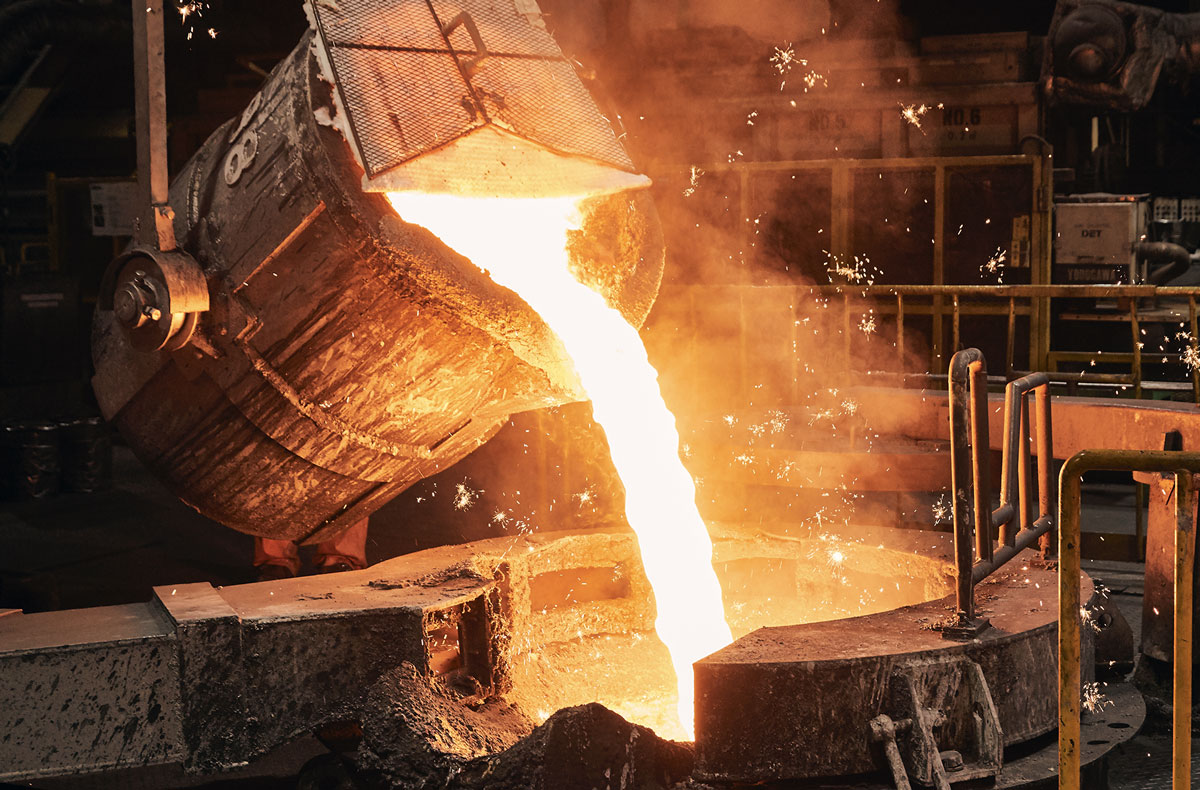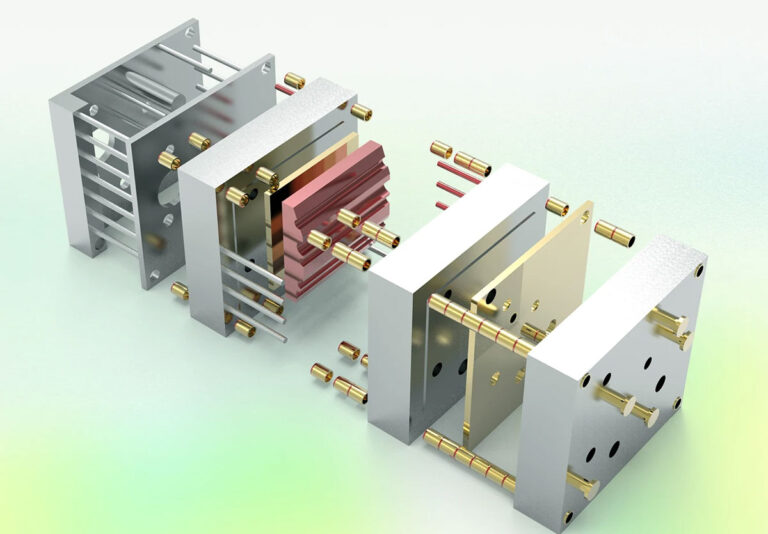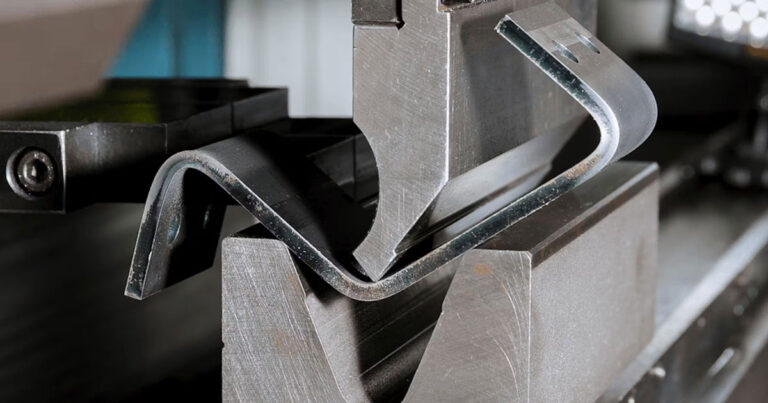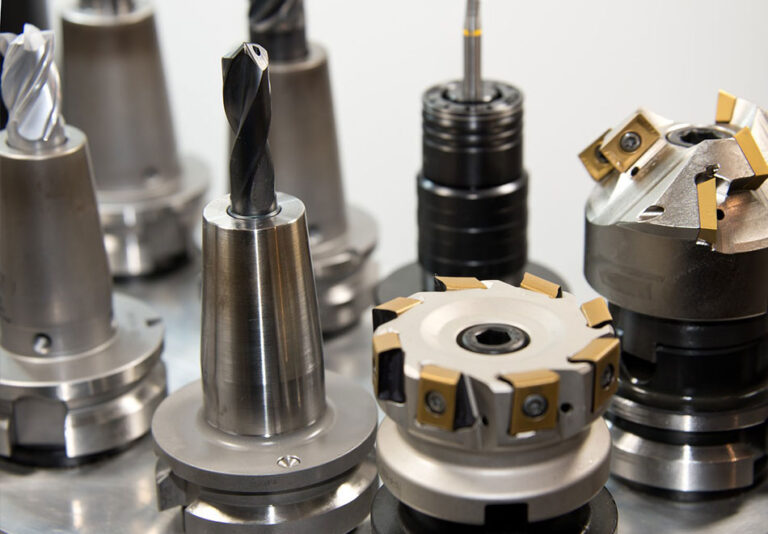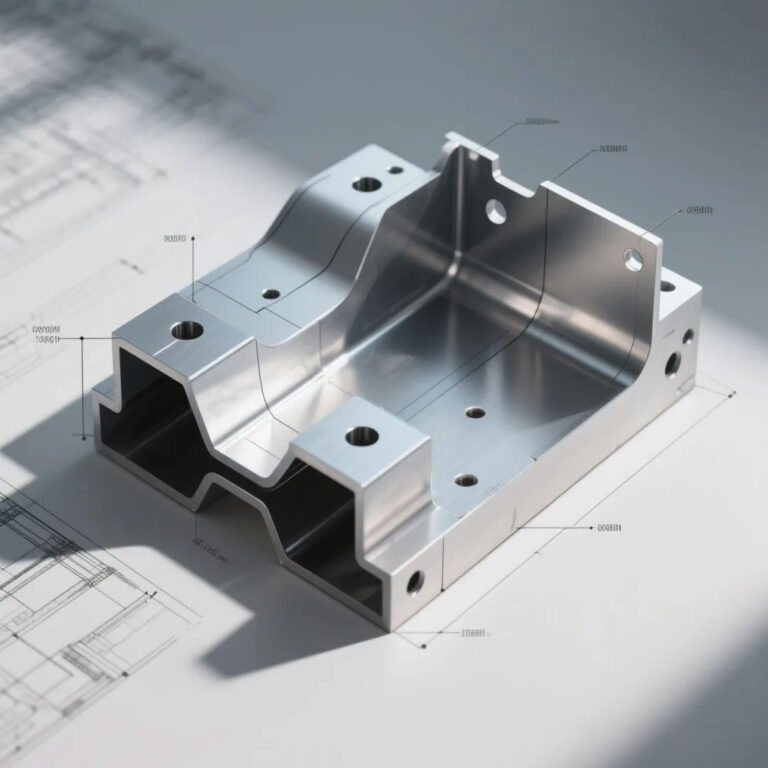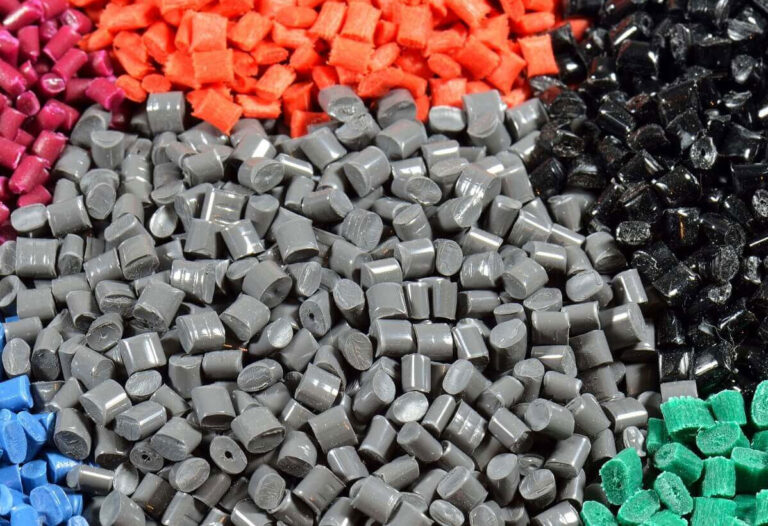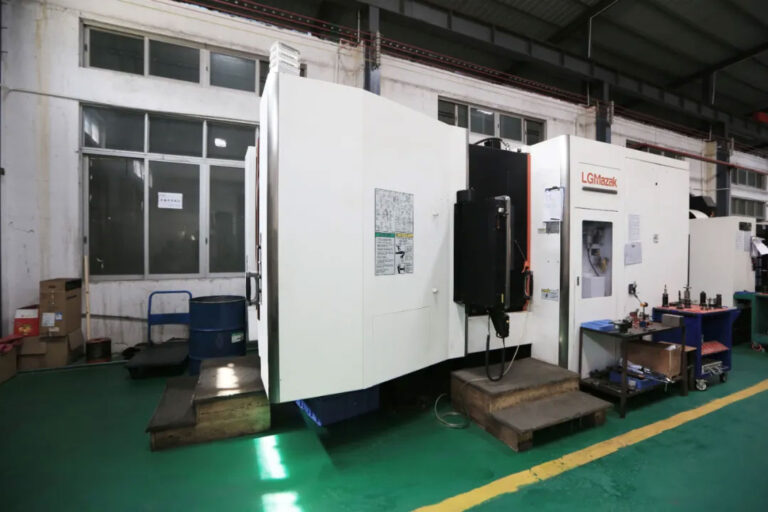What Is Metal Casting?
The production method of pouring liquid metal into a mold cavity that is adapted to the shape and size of the part and waiting for it to cool and solidify to obtain a blank or part is usually called liquid metal forming or casting.
Process flow: Liquid metal → filling → solidification shrinkage → casting
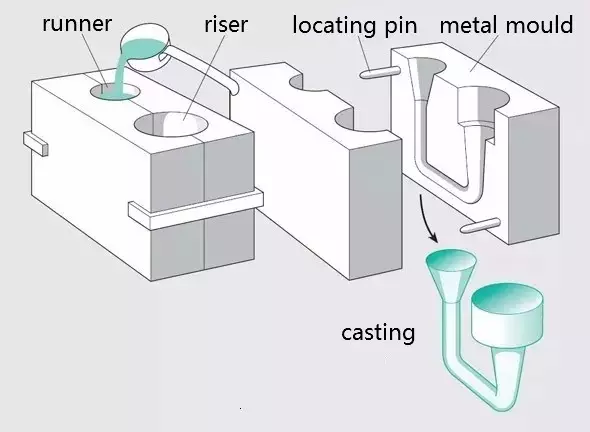
Process characteristics:
1, It can produce parts with any complex shape, especially parts with complex inner cavity shapes;
2, Strong adaptability, unlimited alloy types and almost unlimited casting size;
3, The source of materials is wide, waste products can be remelted, and equipment investment is low;
4, High scrap rate, low surface quality and poor working conditions.
Casting classification:
Casting processes include sand casting, along with various other specialized casting methods such as investment casting, pressure casting, low-pressure casting, centrifugal casting, metal mold casting, vacuum casting, squeeze casting, lost foam casting, and continuous casting.
Sand casting
Sand casting: A casting method that produces castings in sand molds. Steel, iron and most non-ferrous alloy castings can be obtained using the sand casting method.
Process flow:
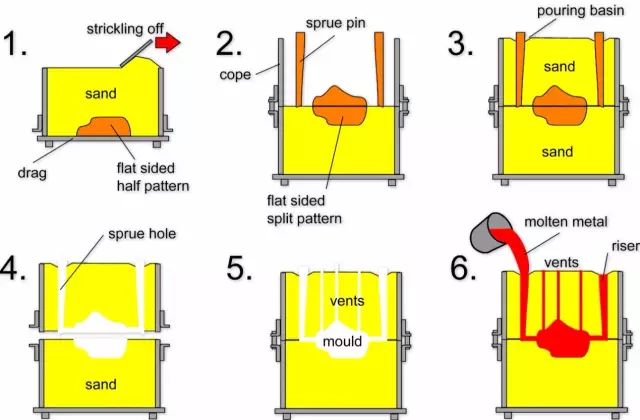
Technical features:
1, Suitable for making blanks with complex shapes, especially those with complex inner cavities;
2, Wide adaptability and low cost;
3, For some materials with poor plasticity, such as cast iron, sand casting is the only forming process for manufacturing their parts or blanks.
Application: Automobile engine cylinder block, cylinder head, crankshaft and other castings.
Investment casting
Investment casting typically involves making a pattern from a fusible material, coating the pattern with several layers of refractory material to form a shell, then melting the pattern and ejecting it from the shell, creating a mold without a parting surface.
After high-temperature firing, the mold can then be filled with sand and poured. This is often referred to as “lost wax casting.”
I, Main Process Flow
- Mold Making
- Wax Injection: Inject wax into the mold to create wax patterns.
- Assemble Cluster: Assemble multiple wax patterns onto a gating system to form a wax pattern cluster (or “tree”).
- Slurry Coating (Investment): Repeatedly coat the wax cluster with a refractory ceramic slurry.
- Stuccoing: Sprinkle refractory sand particles onto the wet slurry coating.
- Shell Hardening: Allow the ceramic shell to harden and build up layers.
- Dewaxing: Heat the hardened shell to melt out the wax, creating a hollow cavity.
- Mold Firing: Fire the empty shell at a high temperature to remove any residual wax and strengthen it.
- Melting: Melt the metal alloy.
- Composition Analysis: Analyze the chemical composition of the molten metal.
- Pouring: Pour the molten metal into the preheated ceramic mold.
- Knock-out / Shell Removal: Remove the solidified casting from the broken ceramic shell.
- Cut-off: Remove the castings from the gating system.
- Heat Treatment: Perform heat treatment (e.g., annealing) on castings to enhance mechanical properties.
- Pickling & Passivation: Clean the casting surface and perform chemical treatment to improve corrosion resistance.
- Inspection: Conduct quality inspection on the finished castings.
- Warehousing: Store the qualified castings.
II, Secondary & Post-Processing Flow
Machining: Perform necessary machining operations on castings as per drawing requirements.
Wax Reclamation: Process the recovered wax from the dewaxing process for reuse.
Advantages:
- High dimensional accuracy and geometric accuracy;
- High surface roughness;
- It can cast castings with complex shapes, and the casting alloys are not restricted.
Disadvantages: complicated process and high cost.
Application: Suitable for producing small parts with complex shapes, high precision requirements, or difficult to process other parts, such as turbine engine blades.
Die casting
Die casting uses high pressure to press molten metal into a precision metal mold cavity at high speed. The molten metal cools and solidifies under pressure to form a casting.
Die Casting Process Flow
- Die Casting Machine Debugging
- Die Casting Die Installation
- Die Design and Manufacturing
- Die Preheating & Coating
- Coating (Release Agent) Preparation
- Die Cleaning
- Clamping (Mold Closing)
- Alloy Melting and Holding
- Insert Preparation
- Pouring & Injection
- Intensification Pressure (Dwell)
- Mold Opening, Core Pulling & Ejection
Advantages:
- During die casting, the metal liquid is under high pressure and has a fast flow rate;
- Good product quality, stable size and good interchangeability;
- High production efficiency and high use of die casting molds;
- Suitable for large-scale mass production with good economic benefits.
Shortcomings:
- Castings are prone to produce small pores and shrinkage;
- Die castings have low plasticity and are not suitable for working under impact loads and vibrations;
- When die-casting high-melting-point alloys, the mold life is short, which affects the expansion of die-casting production.
Application: Die castings were first used in the automotive industry and instrumentation industry, and later gradually expanded to various industries, such as agricultural machinery, machine tool industry, electronics industry, defense industry, computers, medical equipment, clocks and watches, cameras and daily hardware, etc.
Low pressure casting
Low-pressure casting: refers to a method in which liquid metal is filled into a mold under relatively low pressure (0.02-0.06 MPa) and crystallized under pressure to form a casting.
Process flow:
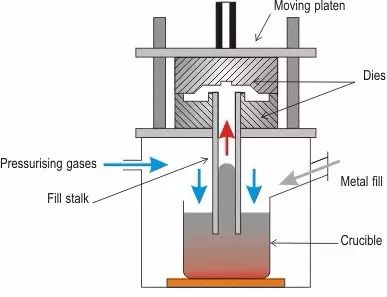
Technical features:
- The pressure and speed during pouring can be adjusted, so it can be applied to various casting molds (such as metal molds, sand molds, etc.) to cast various alloys and castings of various sizes;
- The bottom injection filling method is adopted, and the molten metal fills the mold smoothly without splashing, which can avoid the entrapment of gas and the erosion of the mold wall and core, thereby improving the qualified rate of castings;
- The casting crystallizes under pressure, and the casting has dense structure, clear outline, smooth surface and high mechanical properties, which is particularly beneficial for the casting of large thin-walled parts;
- Eliminating the feeding riser, the metal utilization rate is increased to 90% to 98%;
- Low labor intensity, good working conditions, simple equipment, easy to realize mechanization and automation.
Application: Mainly traditional products (cylinder heads, wheel hubs, cylinder frames, etc.).
centrifugal casting
Centrifugal casting: a casting method in which molten metal is poured into a rotating mold, filling the mold under the action of centrifugal force and solidifying into shape.
Process flow:
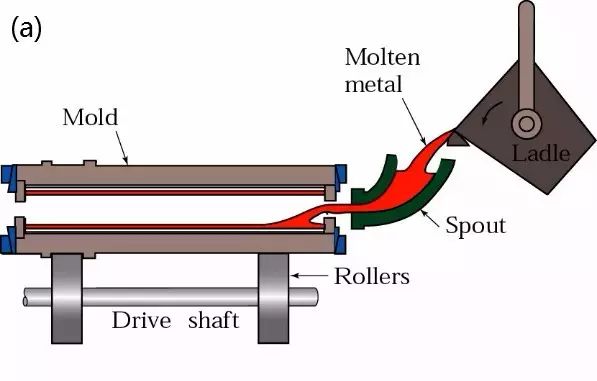
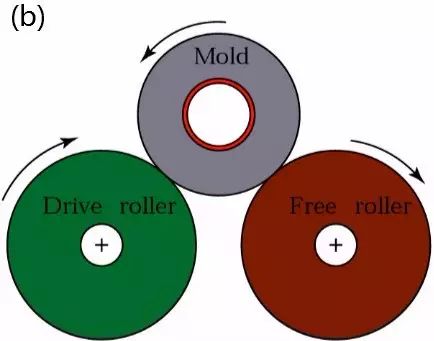
Advantages:
- There is almost no metal consumption in the pouring system and riser system, which improves the process yield;
- No core is required when producing hollow castings, so the metal filling capacity can be greatly improved when producing long tubular castings;
- The casting has high density, few defects such as pores and slag inclusions, and high mechanical properties;
- It is convenient to manufacture composite metal castings such as cylinders and sleeves.
Shortcomings:
- There are certain limitations when used to produce special-shaped castings;
- The inner hole diameter of the casting is inaccurate, the inner hole surface is relatively rough, the quality is poor, and the machining allowance is large;
- Castings are prone to gravity segregation.
application:
Centrifugal casting was first used to produce pipes. It is now widely used in industries such as metallurgy, mining, transportation, irrigation and drainage machinery, aviation, defense, and the automotive industry, both domestically and internationally, to produce steel, iron, and non-ferrous carbon alloy castings. Centrifugal cast iron pipes, cylinder liners, and shaft sleeves for internal combustion engines are particularly common.
Gravity die casting
Metal mold casting: refers to a molding method in which liquid metal fills a metal mold under the action of gravity and cools and solidifies in the mold to obtain a casting.
Process flow:
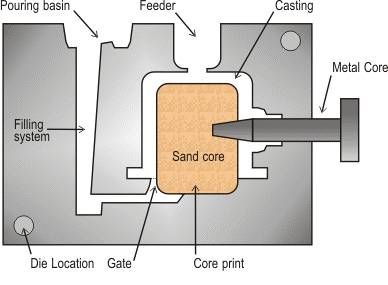
Advantages:
- The thermal conductivity and heat capacity of the metal mold are large, the cooling speed is fast, the casting structure is dense, and the mechanical properties are about 15% higher than those of sand castings;
- Ability to obtain castings with higher dimensional accuracy and lower surface roughness value, and good quality stability;
- Since sand cores are rarely used, the environment is improved, dust and harmful gases are reduced, and labor intensity is reduced.
Shortcomings:
- The metal mold itself is not breathable, and certain measures must be taken to remove the air in the mold cavity and the gas generated by the sand core;
- The metal mold has no yield, and the casting is prone to cracks when solidifying;
- The metal mold manufacturing cycle is long and the cost is high. Therefore, it can only show good economic effects when it is produced in large quantities.
Application: Metal mold casting is suitable for mass production of non-ferrous alloy castings with complex shapes such as aluminum alloys and magnesium alloys, as well as for the production of steel metal castings and ingots.
Vacuum die casting
Vacuum casting: An advanced die-casting process that eliminates or significantly reduces pores and dissolved gases in die-cast parts by removing gas from the die-casting mold cavity during the die-casting process, thereby improving the mechanical properties and surface quality of the die-cast parts.
Advantages:
- Eliminate or reduce the pores inside the die casting, improve the mechanical properties and surface quality of the die casting, and improve the plating performance;
- Reduce the back pressure of the cavity, use alloys with lower specific pressure and poorer casting properties, and it is possible to use small machines to die-cast larger castings;
- The filling conditions are improved, and thinner castings can be die-cast.
Shortcomings:
- The mold sealing structure is complex, difficult to manufacture and install, and thus the cost is high;
- If the vacuum die-casting method is not properly controlled, the effect will not be very significant.
Squeezing die casting
Squeeze casting is a method of solidifying and flowing liquid or semi-solid metal under high pressure to directly produce a finished part or blank. It offers advantages such as high liquid metal utilization, simplified processes, and consistent quality. It is an energy-saving metal forming technology with promising applications.
Process flow:
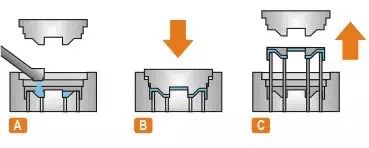
Direct extrusion casting: spraying coating, pouring alloy, closing mold, pressurizing, maintaining pressure, releasing pressure, parting mold, demoulding blank, and resetting;
Indirect squeeze casting: spraying material, closing mold, feeding, filling, pressurizing, maintaining pressure, releasing pressure, parting mold, demoulding blank, and resetting.
Technical features:
- It can eliminate internal defects such as pores, shrinkage holes and shrinkage;
- Low surface roughness and high dimensional accuracy;
- Prevent the occurrence of casting cracks;
- Easy to realize mechanization and automation.
Application: It can be used to produce various types of alloys, such as aluminum alloy, zinc alloy, copper alloy, ductile iron, etc.
Lost foam casting
Lost foam casting (also known as full-mold casting) is a new casting method in which paraffin wax or foam models of similar size and shape to the casting are bonded together to form a model cluster, coated with refractory paint and dried, then buried in dry quartz sand and vibrated to shape.
The model is then poured under negative pressure to vaporize the model, and liquid metal occupies the position of the model. After solidification and cooling, the casting is formed.
Process flow: pre-foaming → foaming molding → coating dipping → drying → shaping → pouring → sanding → cleaning

Technical features:
- The casting has high precision and no sand core, which reduces the processing time;
- No parting surface, flexible design and high degree of freedom;
- Clean production, no pollution;
- Reduce investment and production costs.
Application: Suitable for producing various large and small precision castings with complex structures, with no restrictions on alloy types and production batches, such as gray cast iron engine cases, high manganese steel elbows, etc.
Continuous casting
Continuous casting is an advanced casting method. Its principle is to continuously pour molten metal into a special metal mold called a crystallizer. The solidified (crusted) casting is continuously pulled out from the other end of the crystallizer. It can obtain castings of any length or specific length.
Process flow:
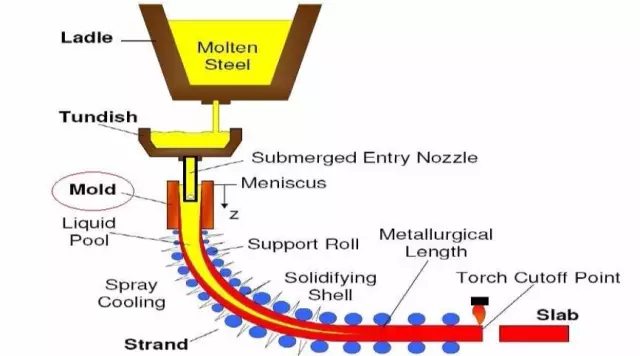
Technical features:
- Because the metal is cooled rapidly, the crystals are dense, the structure is uniform, and the mechanical properties are good;
- Save metal and improve yield;
- The process is simplified, and the modeling and other processes are eliminated, thereby reducing labor intensity; the required production area is also greatly reduced;
- Continuous casting production is easy to mechanize and automate, thus improving production efficiency.
Application: The continuous casting method can be used to cast long castings with unchanged cross-sectional shapes such as steel, iron, copper alloy, aluminum alloy, magnesium alloy, etc., such as ingots, slabs, rods, pipes, etc.
